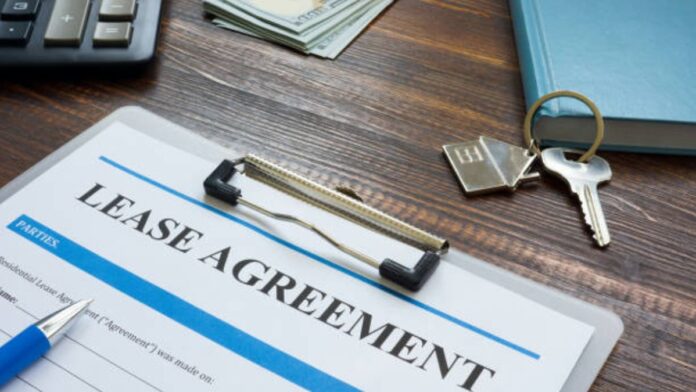When moving into a new apartment, renting a car, or leasing a vehicle, you may be required to sign a lease agreement. A lease agreement is a legal contract that outlines the terms of your rental or lease. It typically includes details about duration, cost, deposit amount, and other pertinent information about the arrangement. A lease agreement can help ensure both parties understand what is expected from them before they move forward with their arrangement. However, it’s not uncommon for people to feel hesitant about signing such an important document without consulting with an attorney first. If you’re nervous about signing your next lease agreement without understanding all of its implications beforehand, this guide will walk you through what you need to know about writing a lease agreement document as well as some helpful tips for creating your own.
What Is a Lease Agreement?
If you’ve ever signed a rental agreement or lease, you’ve entered into a lease agreement. A lease is a contract between two parties (landlord and tenant) in which the tenant uses the landlord’s property for an agreed-upon amount of time in exchange for a specified amount of rent. This contract outlines the rules and regulations of the rental including the duration, rental amount, deposit amount, pet policies, tenant responsibilities, landlord responsibilities, and other important details. There are a few different types of lease agreements. A residential lease agreement is used for a long-term lease on a residential property, such as a house or apartment. A commercial lease agreement is used for a short-term commercial lease, such as a retail lease. A business lease agreement is used for a long-term commercial lease, such as a lease for a retail store or office building.
When to Use a Lease Agreement
A lease agreement is meant for properties with a long-term arrangement. Therefore, it’s not recommended to use a lease agreement for an agreement that is less than a year in length. A lease agreement is commonly used for residential or commercial rental agreements and long-term car leases. It’s important to note that a lease agreement is different from a rental agreement, although the terms are sometimes used interchangeably. A rental agreement is typically used when renting a car or equipment such as a boat or a truck. A rental agreement is not a legally binding contract. A lease agreement, on the other hand, is legally binding and specifies the amount of time for which the lease will be in effect.
Create Your Own Lease Agreement Document
If you’re asked to sign a lease agreement, it’s important to read and understand it completely before signing. However, if you’re asked to provide a lease agreement, it’s essential to be mindful of your audience. If the person reading your lease agreement isn’t familiar with leasing or the language of leasing, they’ll likely be put off by the amount of legal jargon in the lease agreement. This could lead them to overlook a very important provision or clause within the document. To ensure your lease agreement document doesn’t scare people away, but still protects you as the lessor, it’s essential to create a lease agreement that is easy to read and understand.
Important Information to Include in Your Lease Agreement
Your lease agreement should include the following information:
- Parties involved: The names of the parties involved in the lease agreement must be included in the lease agreement.
- Property: The details of the property being leased, rented, or borrowed must be included in the lease agreement.
- Duration: The length of time for which the lease agreement is in effect must be included in the lease agreement.
- Rent: The amount of rent due each month during the term of the lease must be included in the lease agreement.
- Deposit: The amount of deposit due when entering into the lease agreement must be included in the lease agreement.
- Additional fees: The fees associated with the lease or rental of the property must be included in the lease agreement.
- Termination: The circumstances under which the lease can be terminated must be included in the lease agreement.
- Other terms: For added clarity, you can include any other terms or conditions outlined in your lease agreement in the lease agreement.
Conclusion
When it comes to writing a lease agreement, it’s important to understand what goes into the creation of one. Lease agreements are meant to protect both parties involved by outlining the rules and expectations of the lease. Although the process of writing a lease agreement can feel intimidating, this guide breaks the process down into easy-to-follow steps. With these tips, you’ll be able to walk through the process of creating a lease agreement document with ease!









